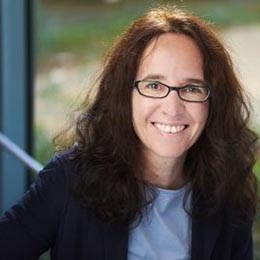Dr Katja Martina Eckl
Senior Lecturer in Biomedical Science
Biology

Department: Biology
Email address: [email protected]
Profile
Biography
I have graduated in Biochemistry (Dipl.-Biochem – MSc) from the Freie Universtät Berlin (Germany). My final year project (thesis) was conducted at the Max Delbrück Centre for Molecular Medicine – I studied the very rare genetic skin condition Mal de Meleda (published 2001 and 2003).
I conducted my PhD research in Berlin (Max Delbrück Centre) and later at the University of Cologne (Cologne Center for Genomics), focusing on the molecular and functional characterisation of Congenital Ichthyosis. I concluded this work in 2006 (papers published in 2005 and 2007) and was awarded a PhD in genetics.
From 2006 to 2011 I held postdoc, senior postdoc and research fellow posts in Germany, before I have been appointed Senior Research Fellow at the Medical University in Innsbruck, Austria (Dept for Human Genetics) from 2012 to 2015.
I have awarded various travel grants to visit (international) research laboratories in Tel Aviv, London, Vienna, Berlin and Münster in the past years.
I have been appointed Senior Lecturer for Biomedical Science at Edge Hill University in November 2015.
I am a Senior Fellow of AdvancedHE (SFHEA).
Research Interests
Dermatogenetics Research Group – Understanding the Biology of the Skin
My research group is interested in rare, genetic diseases which affect the epidermis. We seek to understand the cause of these diseases, study differences in skin function and develop new patient-specific therapeutics. In collaboration with clinical partners we seek to unravel and functionally understand new genes for congenital ichthyosis. Furthermore, we are interested in new pipelines to generate human recombinant proteins required for protein replacement therapy. Our most recent project focuses on plant suspension cell culture bioprocessing using bench-size bioreactors.
Autosomal Recessive Congenital Ichthyosis (ARCI)
One of our main interests is topical drug development for autosomal recessive congenital ichthyosis (ARCI), a very are condition which affects roughly 800 persons in the UK. ARCI can be life-threatening at birth. It is life-long condition with currently only limited and not sufficient therapy options. ARCI is a clinically and genetically heterogeneous condition and mutations in 14 different genes are known to cause this disease. Interestingly, more than 30% of all patients show mutations in the gene TGM1. This results in a missing or faulty protein (Tgase-1) in the outmost layer of the skin (epidermis), thus explaining the scaly skin phenotype of these patients.
The skin is the largest organ of the human body – how does it work?
An introduction to the biology of the skin, rare genetic skin diseases and their current treatment options is summarised in the document “The Biology of the Skin”, which can be found here
3D Skin Modelling
Our research would not be possible without skin samples donated by healthy volunteer and all the many ichthyosis patients – We are extremely grateful for these skin sample donations and the support we receive from patients for our research. We believe in the reduction of use of animals in research and have established an alternative drug test method replacing animals: We generated full-thickness 3D skin models which mimic the skin of ARCI patients both, genetically and functionally. Patient skin is different, depending on the underlying genetic cause of the disease – we can simulate these differences in our 3D skin models. Depending on skin colour of skin sample donor, we can adapt the skin colour of the 3D skin model accordingly.
New treatment ideas for ARCI – Protein Replacement Therapy (PRT)
We have recently been able to show that replacing this missing or faulty protein by Protein-Replacement-Therapy” restores the skin condition fully. For our tests we used artificial 3D skin model system, as this replaces all animal tests and minimises the use of animals in our research.
We are excited we could verify results from our Proof-of-Concept study conducted in 2015 (Witting et al. 2015) with patient-specific 3D skin models which allows us now attempting the next step – We are currently preparing for preclinical safety studies which are required before any clinical studies can be conducted.
More protein is required for PRT – Molecular Pharming
Congenital Ichthyosis is a rare condition, but it presents from birth and persists a life-long. Treatment is required for the whole skin surface of each patient. When calculating the amount of protein required for protein replacement therapy, one arrives at quite large quantities. Protein replacement therapy is expensive – it is our utmost wish to produce a fully functional protein for therapy at lowest costs and expenditures. We have decided to use carrot cells employing a bench-size bioreactor system. Carrot cells can be cultured with simple media, are unlikely to catch infections and contaminations and exhibit all required post-translational protein modification enzymes required for proper protein manufacture.
Collaborations and support
We are thrilled by the support we received from the British and German Ichthyosis Support Groups (Ichthyosis Support Group – ISG and Ichthyose e.V. ) which are the only support groups for these rare and often devastating disease in their respective countries.
We collaborate with the teams at Huddersfield University, the Freie University Berlin, the University of British Columbia in Vancouver, Medical University Münster, Fraunhofer Institute IME, University of Cologne, the Medical University of Innsbruck and Tel Aviv University and many others.
Teaching
I am programme lead for BSc (Hons) Biomedical Science and year coordinator for all biology students in year 2 (level 5). I am teaching a variety of subjects and modules:
- Research Methods in Biology
- Human Genetics
- Advanced Tissue Applications
- Applications of Genetics
- Final year projects (Dissertations)
I am also introducing UG and PGR students to moral dilemmas & ethical considerations for biologists and to the university’s ethical applicaiton process.